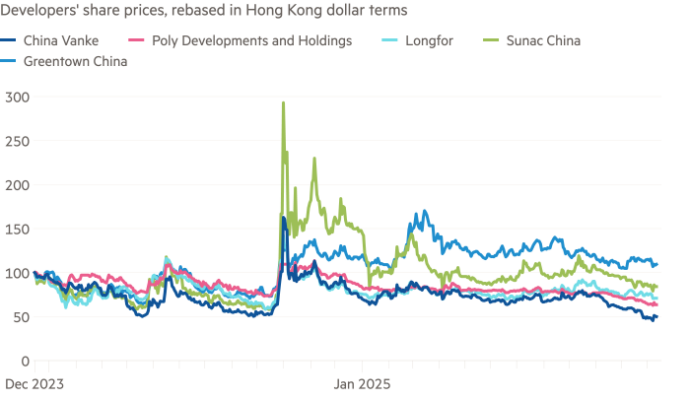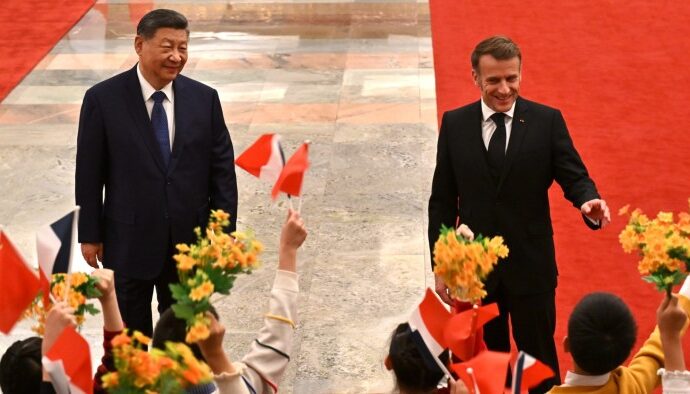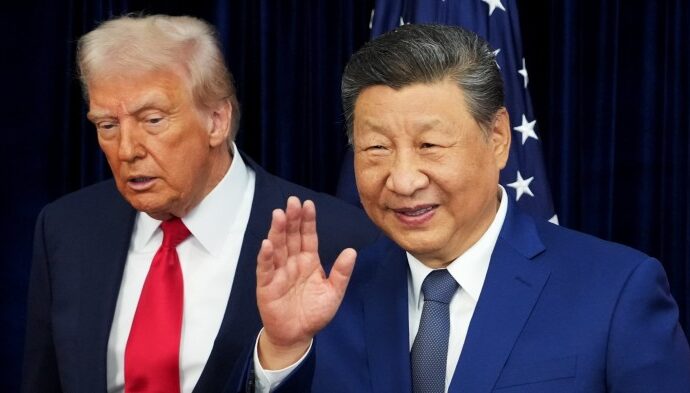
Unlock the White House Watch newsletter for free
Your guide to what Trump’s second term means for Washington, business and the world
The three-month détente in the US-China trade war, announced on Monday morning, is undoubtedly a relief for the global economy. Both sides agreed to slash duties on each other by 115 percentage points and established a “consultation mechanism” to help resolve ongoing trade disputes. Beijing also said it would “suspend or cancel” non-tariff measures taken against America, which includes curbs on critical mineral exports. The thawing of ties between the world’s two largest economies will buoy households, businesses and financial markets at home, as well as in countries caught in the crossfire. But optimism should be tempered.
As with the US-UK trade agreement last week, the White House is selling this as a win. It could play well with Donald Trump’s base. The threat of steep tariffs has enabled the US president to extract concessions from Beijing. Traders had also not expected the weekend of talks in Geneva to result in such a precipitous climbdown by both countries. US stock markets had already recovered most of their losses since Trump unveiled his “reciprocal” tariff plans on April 2. On Monday, as further trade war pessimism unwound, American and Chinese equities rallied further, the dollar surged and gold tumbled.
But investors ought to tune out the short-term noise and focus on the bigger picture. First, though tariff rates between the US and China are no longer in three digits they are still elevated in historical terms. The effective US tariff rate on goods from China is now around 40 per cent, according to Capital Economics. That is significantly higher than before Trump’s second term began, and the White House is still mulling sector-specific duties. An economic hit from the initial prohibitive tariff rates between both countries is also in the pipeline. Shipping between Shanghai and Los Angeles won’t jump back overnight.
Second, there is no guarantee that the three-month truce will lead to an enduring ceasefire. Cross-border trade and investment between the US and China will remain subdued as long as tariff rates remain unsettled. Scepticism is also warranted when projecting how negotiations between Beijing and Washington might pan out from here. Trump has long griped about the US trade deficit with China. But it is unclear if the ongoing talks will notably correct that, since it stems from underlying economic imbalances — oversupply in China and excess demand in America. Later on Monday, Trump said he would raise tariffs if no deal is reached in 90 days.
Finally, investors should be wary of extrapolating too much from the UK and China deals. There is an emerging view that Trump’s tariff climbdown will ultimately bring US duty rates closer into line with his campaign plans; 10 to 20 per cent for most countries, and 60 per cent for China. Given all the tariff twists and turns over the past few weeks, markets might be forgiven for thinking that’s a good outcome. But prior to the president’s inauguration, that was most analysts’ worst-case scenario.
And yet, investors seem happy to buy into Trump’s portrayal of a less bad outcome as a positive one. Risk appetite was animating trading desks around the world on Monday. Safe haven assets sold off. The S&P 500 edged closer to where it started the year. And US tech stocks were back in bull market territory. Markets are trading as though “liberation day” never happened. Lingering economic uncertainty and the nonbinding nature of America’s latest trade deals should be enough of a reason for caution. Add in a mercurial president and market bullishness is hard to comprehend.


